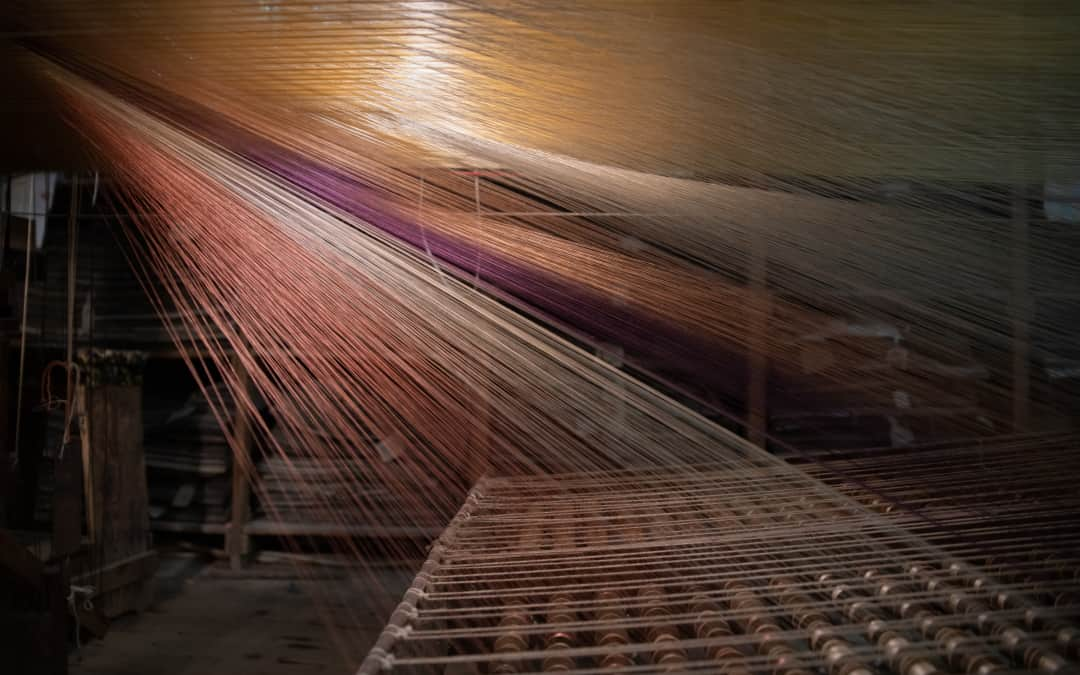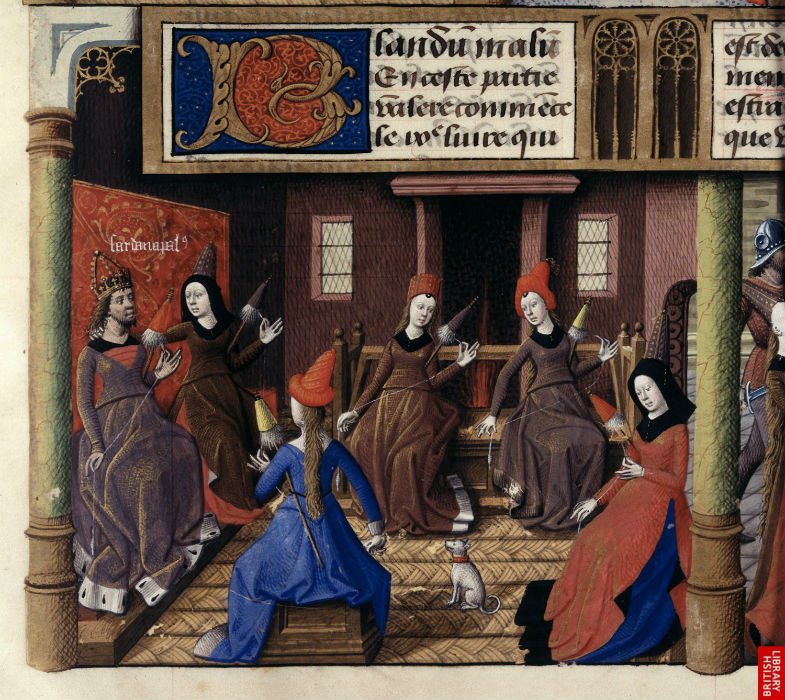The Middle Ages is known as a dark period, but for weaving, it is a time of great improvement, both in the tools and in the materials employed by weavers. Indeed, during these centuries Europe saw the beginning of silk fabric production: a real revolution.
Which Looms Did Medieval People Use?
During the Middle Ages, there were mainly two types of looms used.
The warp-weighted loom, or vertical loom, in which clay or stone weights were used to keep warp threads taut. It appeared in the Neolithic period and was still popular among the Greeks and Romans. It continued to be used in the Middle Ages for the production of tapestries.
In the 13th century, it was equipped with a treadle, which made the weaver’s work easier, despite the fact that its structural characteristics and processing procedures did not allow for the production of large fabrics or the use of very fine yarns.
The horizontal loom was already known in ancient times and used for millennia by the Egyptians (from 4000 B.C.) and the Romans for the production of simple fabrics.
It was in the 12th century that this loom evolved into a more complex “drawloom” which required one or more workers (drawboys) to operate the lashes in addition to the weaver. Indeed, thanks to this drawloom, weavers could produce longer and wider fabrics, and create complex patterns with more elaborate designs, rich in details and colors.
But besides these advances in technology, another innovation was coming: a new kind of thread.
Production of Silk Fabrics in Europe: The Origins
Wool and linen dominated weaving in the Middle Ages. At least until the 12th century, when two new materials spread widely across Europe, cotton and silk, both coming from the East.
Romans already knew silk from the 1st century B.C., but it was a particularly precious material which only a few could afford because of the difficulty in finding it since it was imported from China and the Byzantine Empire.
During the 12th century, with the Second Crusade (1147), the Norman king Roger II of Sicily decided to attack Corinth and Thebes, two important centers of silk production in the Byzantine Empire. Here he discovered and took back to his Kingdom of Sicily the techniques and craftspeople to produce silk, which would later reach Lucca and other Italian cities.
Medieval weavers – “Les Fais et les Dis des Romains et de autres gens” by Valerius Maximus (British Library)
The First Silk Weavers in Venice
Venice too, thanks to its privileges in trade with Byzantium, developed silk weaving in the 11th century, initially for simple fabrics. A legend traces the evolution of silk weaving towards more complex and precious fabrics, to the meeting between Emperor Henry IV and a Venetian lady he had fallen in love with. And to whom, as a gift, he left a silk cloak made by his Greek tailor, an expert weaver.
In 1265, the production of samites, silk fabrics of Persian origin, very heavy and of great value, spread to such an extent that an ad hoc corporation was created: the Art of Samiteri.
A New Status Symbol in Europe
The rise of silk weaving in Europe, therefore, started a real revolution:
- since Europe had its silk production centers, it didn’t need to import this material from the East anymore, so its cost decreased;
- for centuries, only kings, churches, reliquaries of saints and nobility had used silk fabrics, but during the Middle Ages the upper-middle class started buying it too, thus leading to a production growth;
- silk has unique features, it’s shiny, soft, light and resistant. So, it was the perfect fiber to produce luxury fabrics, destined to become a status symbol for rich families.
Due to these reasons, the number of silk fabric manufacturers increased rapidly in Venice during the Middle Ages, specializing in different types of precious fabrics: brocades, damasks, lampas, satins and velvets.
Photo credit: Davide Zugna - Venezia da Vivere



